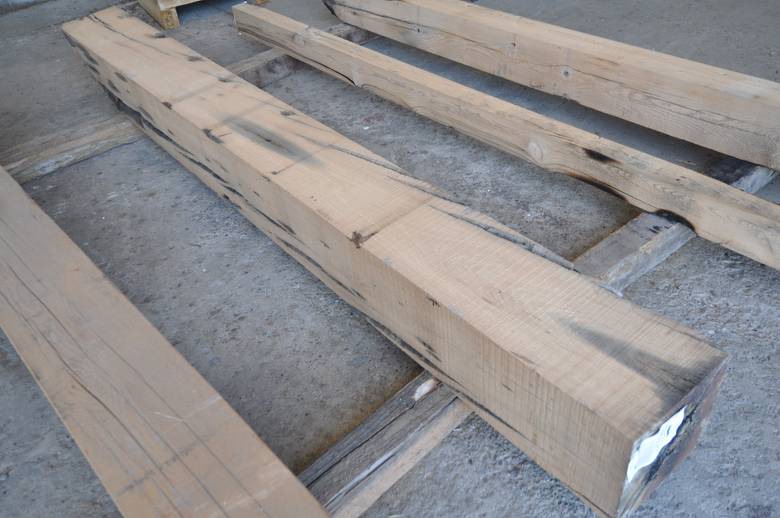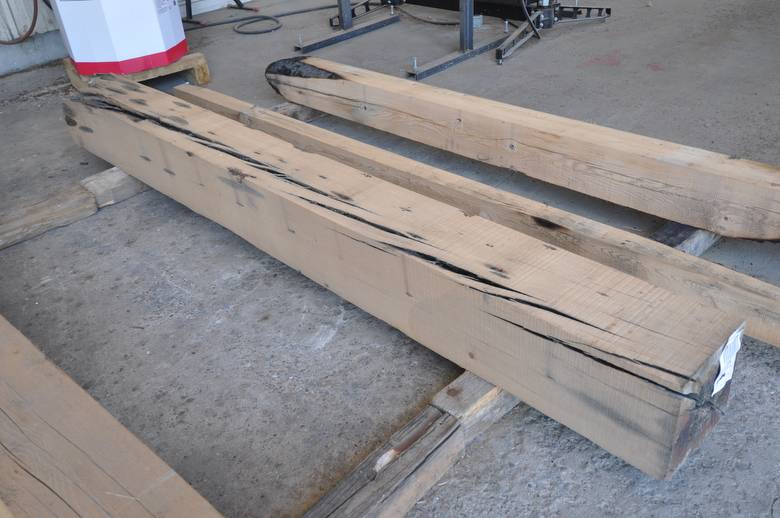Oak Band-Sawn Timbers
Oak Band-Sawn Timbers
from RubyOak and/or other sources
Specification Sheet #6100 - Resawn Oak Timbers
Request Quote
Height
Width
Length
Quantity
3-8"
6-8"
to 16'
min: 1 each
Related Productline Pages
Oak Resawn
Specification Sheet #6100 - Resawn Oak Timbers
Species
Oak (May be mixed Red and White or all Red or all White Oak).
Source
Barns, buildings and industrial structures from different locations in North America
HC/FOHC
Resawn Oak timbers are generally HC; usually moderate to very tight growth rings.
Metal
Nails, bolts and other fasteners are removed to enable the material to be resawn. Trestlewood makes no guarantee that there is no metal left in or broken off inside the beam.
Holes
Nail, bolt and other fastener holes are allowed; the quantity and size of the holes can vary widely from timber to timber, with some timbers containing no holes or only limited small nail holes and others containing frequent nail and bolt holes. Staining around nail and bolt holes is common.
Mortise Pockets/Notches/Holes
Resawn Oak timbers may have notches and mortise pockets from their previous use.
Checking/Cracks
Resawn Oak timbers generally have checking from the heart center to the exterior faces of the timber. Some of this checking may be extensive. Checking is out of specification only if it renders the timber unsound (meaning that it may fall apart because of the check.) In addition, timbers can have surface checking and cracks, moderate butt checking and end splitting.
Moisture Content/Stability
Resawn Oak Timbers are generally very dry and seasoned and are generally more stable and less prone to shrinkage than are green timbers.
Surfacing
Bandsawn. Color will vary based on the subspecies and level of staining.
Weight
Typically, approximately 4 pounds per board foot
Appearance Variation
Resawn Oak timbers often come from a variety of sources. As a result, timber characteristics can be expected to vary from piece to piece. Trestlewood believes that appearance variations (no two timbers exactly alike) are one of the selling points of this product line.










